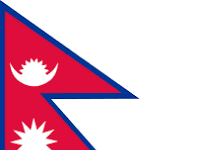There is always huge amount of money at stake when trading in share market which makes it look like a tensed war field. These tensed situations create unnecessary anxiety levels among traders. Technical analysis calms this adrenaline rush. In simple words, technical analysis forecasts the direction of prices of securities through the study of past market data, primarily price and volume. It is like a quiver in itself that has many sharp and effective arms, better known as technical analysis tools.
Technical analysis is a creative and dynamic process that puts you in the driver’s seat, most of the time with high accuracy. By learning technical analysis, a trader gets equipped with logical reasoning power that helps him to not only select profitable bids but also to avoid the less appealing or the wrong ones. Still, if he or she is on the losing side, technical analysis helps to manage that loss with high efficacy.
This section explains everything about technical analysis in a simple question and answer format. The key topics covered include what is technical analysis, what is a price chart, support and resistance levels, key technical analysis indicators, different kinds of technical analysis and the most commonly used chart patterns. Scroll down to become a technical analysis expert.
Technical Analysis is the practice of anticipating price changes of a financial instrument {like shares} or market as a whole by analyzing prior price changes and looking for patterns and relationships in price history. It is the art of gauging the trends, momentum and the overall sentiment behind the price movement of a stock or any other security helping us to make the investment decision. Lying the foundation of technical analysis are hundreds of indicators that are used, compare, screen and then applied as a part of an underlying investment strategy. However it is interesting to note that no single indicator has ever been found to be completely conclusive.
Charts are the key tool used in technical analysis. For each instrument, the daily and weekly charts are analyzed to identify various types of technical analysis opportunities. Some events are bullish suggesting a rising price, while others are bearish suggesting a falling price.
Here is an overview of the most commonly used chart patterns:
Double Top
The double top is a frequent price formation at the end of a bull market. It appears as two consecutive peaks of approximately the same price. The two peaks are separated by a minimum in price, a valley. The price level of this minimum is called the neck line of the formation. The formation is completed and confirmed when the price falls below the neck line, indicating that further price decline is imminent.
Double bottom
A double bottom is the opposite pattern of the double top signaling a declining market. The pattern closely resembles the shape of a ‘W’ and is formed by two price minima separated by local peak defining the neck line. The formation is completed and confirmed when the price rises above the neck line, indicating that further price rise is imminent. However to confirm this pattern the security needs to break through the support line to signal a reversal in the downward trend and should be done on higher volume.
Head and shoulders (top)
The head and shoulders chart pattern is one of the most popularly used and most reliable pattern in technical analysis. It is a reversal pattern whose formation consists of a left shoulder, a head, and a right shoulder and a line drawn as the neckline.
The left shoulder is formed at the end of an extensive move during which volume is noticeably high. After the peak of the left shoulder is formed, there is a subsequent reaction and prices slide down to a certain extent which generally occurs on low volume. The prices rally up to form the head with normal or heavy volume and subsequent reaction downward is accompanied with lesser volume.
The right shoulder is formed when prices move up again but remain below the central peak called the Head and fall down nearly equal to the first valley between the left shoulder and the head or at least below the peak of the left shoulder. Volume is lesser in the right shoulder formation compared to the left shoulder and the head formation. A neckline is drawn across the bottoms of the left shoulder, the head and the right shoulder. When prices break through this neckline and keep on falling after forming the right shoulder, it is the ultimate confirmation of the completion of the Head and Shoulders Top formation. It is quite possible that prices pull back to touch the neckline before continuing their declining trend.
Ascending Triangle Pattern
An ascending triangle is considered a bullish continuation signal. It is considered a consolidation pattern prior to continuation of the uptrend. An Ascending Continuation Triangle shows two converging trend lines. The lower trend line is rising and the upper trend line is horizontal. This pattern occurs because the lows are moving increasingly higher but the highs are maintaining a constant price level. The pattern will have two highs and two lows, all touching the trend lines. This pattern is confirmed when the price breaks out of the triangle formation to close above the upper trend line. Volume is an important factor to consider. When breakout occurs, there should be a noticeable increase in volume.


